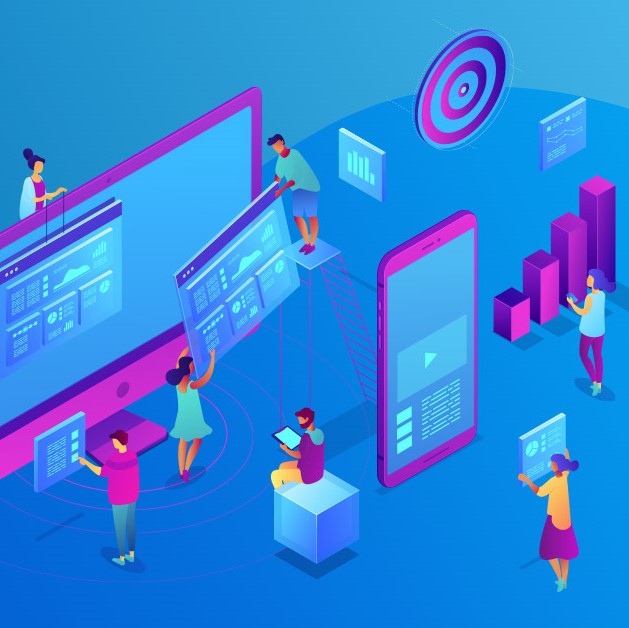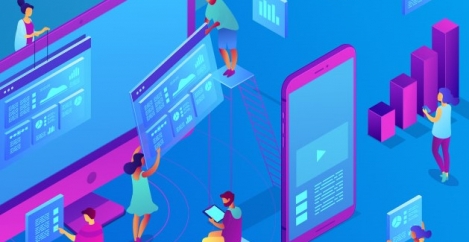September 30, 2019
The role of AI in creating a more human workplace
 As artificial intelligence (AI) continues to infiltrate modern society, the benefits and pitfalls the technology receive almost peerless attention. The emergence of AI is of particular importance to how organisations might recruit, with clear signs that they are becoming more interested in the benefits it brings to their businesses.
As artificial intelligence (AI) continues to infiltrate modern society, the benefits and pitfalls the technology receive almost peerless attention. The emergence of AI is of particular importance to how organisations might recruit, with clear signs that they are becoming more interested in the benefits it brings to their businesses.
What is evident is that AI will result in seismic changes to the employment landscape. In the new working reality, being adaptable to whatever changes it might bring as well as opportunities will be critical.
The technology has, however, begun to stimulate scepticism around what human skills will still be crucial in the workplace. To counter these concerns, executives must find the balance and place smarter technologies at the core of their operations. By doing so, humans may well become less anxious and realise how AI will add business value.
AI at its best
At it’s core AI may be about systems that can make decisions traditionally requiring human thinking. However, more and more studies are finding that where human and AI can combine, decision making improves.
[perfectpullquote align=”right” bordertop=”false” cite=”” link=”” color=”” class=”” size=””]Helping employees see how AI and employees work hand in hand as opposed to in replacement of them will be crucial for business leaders[/perfectpullquote]
Investing in new technology is no longer an option, it’s a necessity – especially when it comes to improving the way people work and learn. The right technology will have the capacity to do the repetitive, menial tasks, and learn to leverage the data-driven insights AI provides making employees more effective. Doing so produces greater learning outcomes, better aligns Learning & Development (L&D) to organisational performance and amplifies the value to the business.
L&D, for example, can use AI to better anticipate what learners want to know and need to know to further their careers. There is a growing consensus that AI can remove the drudge tasks that will free up humans to do more complex work. A recent interview by IBM’S CEO Ginni Rometty highlighted that AI, for example, could be useful in identifying employee’s strengths and enabling businesses to recognise how they could accelerate their productivity streams.
Helping employees see how AI and employees work hand in hand as opposed to in replacement of them will be crucial for business leaders. Knowing how to navigate through the automation and AI revolution and maintain a strong connection with the workforce is a great opportunity for businesses
Fundamentally AI can support that employee engagement by producing deeper and more personalised learning experiences, which contribute to ever-improving and consistent outcomes the more people use them and the longer they are used.)
Do not disregard human skills
A recent study by my own firm Docebo found 40 percent of employees say their companies do not offer sufficient training to build day-to-day technical skills.The skill-building learning programs that employees crave are delivered significantly less often. Also as many as 44% of employees say their organisations only offer this type of critical training annually.
In today’s digital-first workplace, results show that many workers today don’t know how to use the technology needed to perform their job and aren’t confident in their current technology skills. As AI’s reach within an organisation grows, seasoned professionals could feel that they are relinquishing a piece of their job scope and autonomy to automation.
Here in the UK, the Government has already begun to address this eventuality by introducing the National Retraining Scheme, helping adults retrain into better jobs and be ready for future changes to the economy, including those brought about by automation.
Making a more human workplace requires encouraging people to develop their flexibility and resilience in the world of work, so they can take advantage of new opportunities. Traditional skills once in high demand may well not be as attractive to employers, especially of which are keen to embrace more disruptive technologies. Employees will want to be able to provide a blend of skills which can cater to these new models of working.
The impact on different sectors
As much as AI is beginning to permeate and impact the world of work in all sectors, the implications differ in each.
For the construction sector, there will be many positives, negatives, and…unknowns. This will manifest in a number of key ways. Evidently, some companies in the industry have been including artificial intelligence within their building information modelling (BIM) processes to support the planning, design, and construction of major projects.
[perfectpullquote align=”right” bordertop=”false” cite=”” link=”” color=”” class=”” size=””]Supercharged BIMs can create generative designs to identify and mitigate clashes between the different models generated by all the teams involved in the planning and design phase[/perfectpullquote]
These supercharged BIMs can create generative designs to identify and mitigate clashes between the different models generated by all the teams involved in the planning and design phase. The beauty of this means teams can see visually every component of a building and determine the risks or obstacles before it is actually built. Construction companies have also started utilising off-site factories staffed by both humans and autonomous robots that create components of a building, which are then finished off by workers on-site.
Likewise for manufacturing which will be one of the hardest hit sectors. The suspicion is that with the increase in automated production, the number of human jobs required will fall. However, more imaginative manufacturing companies can instead use AI and real-time data analytics to identify and reduce expensive errors, improve safety to reduce worksite injuries, and make their operations more efficient.
We have also witnessed this change already in other sectors, such as retail. Look at the cashier-less Amazon Go stores which employ AI to monitor customer shopping trends. Data retrieved whilst customers scour the shopping aisles can be forwarded to the respective teams working to improve customer experiences.
Similar testimonies have begun to emerge in the banking sector through the use of conversational virtual assistants and chatbots, to assist customers not able to go during branch opening times or keen to avoid long queuing hours. Now, this does not disrupt the flow of work for employees but uncovers additional opportunities to cater to a far greater customer audience.
Technology is at the heart of everything we do and it’s strange to think that it wasn’t always there.
In conclusion, perhaps the workplace must drive the theme that AI won’t eliminate job roles, but rather change how humans work – and be centered on improving performance by changing how we apply programmes in the flow of work. You must be prepared for that change – it’s a good thing.

Josh Squires is Director of EMEA at learning technology firm Docebo. Josh has worked in learning and development technology for over 20 years and holds a PhD in Learning, Design and Technology.













